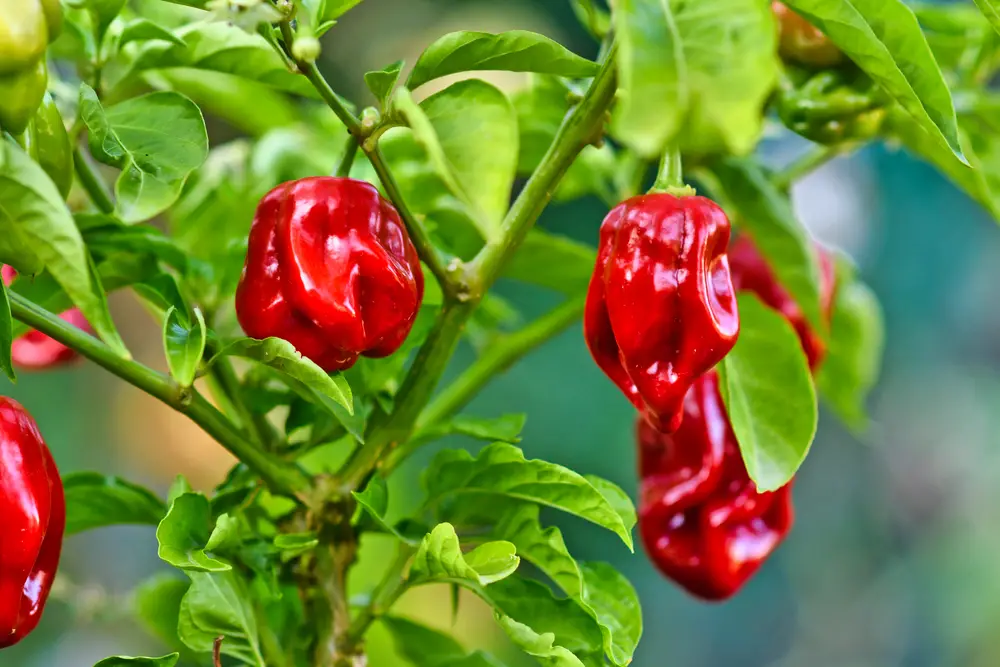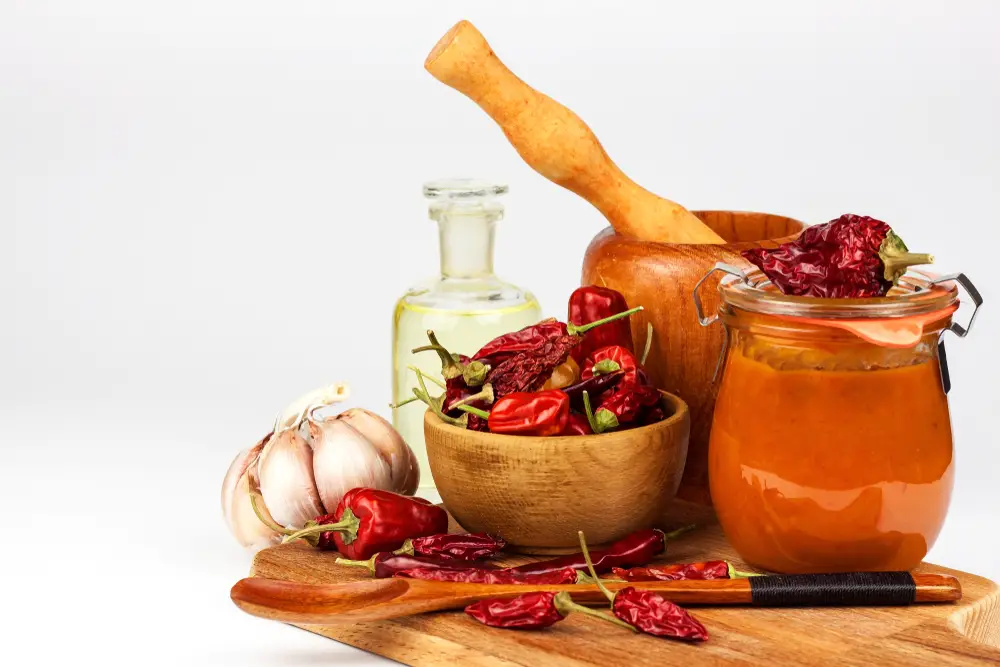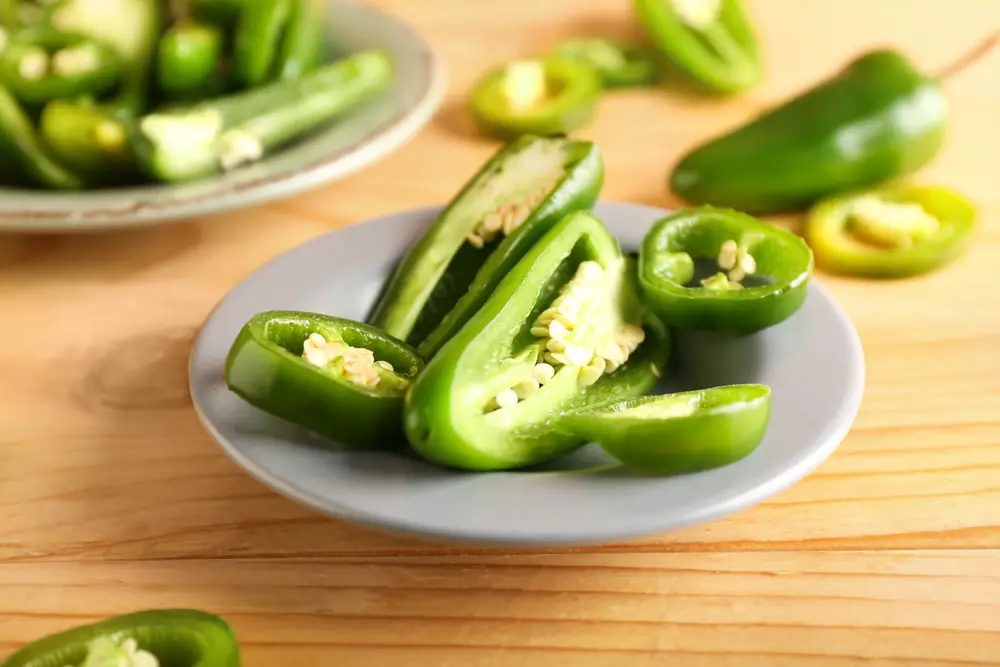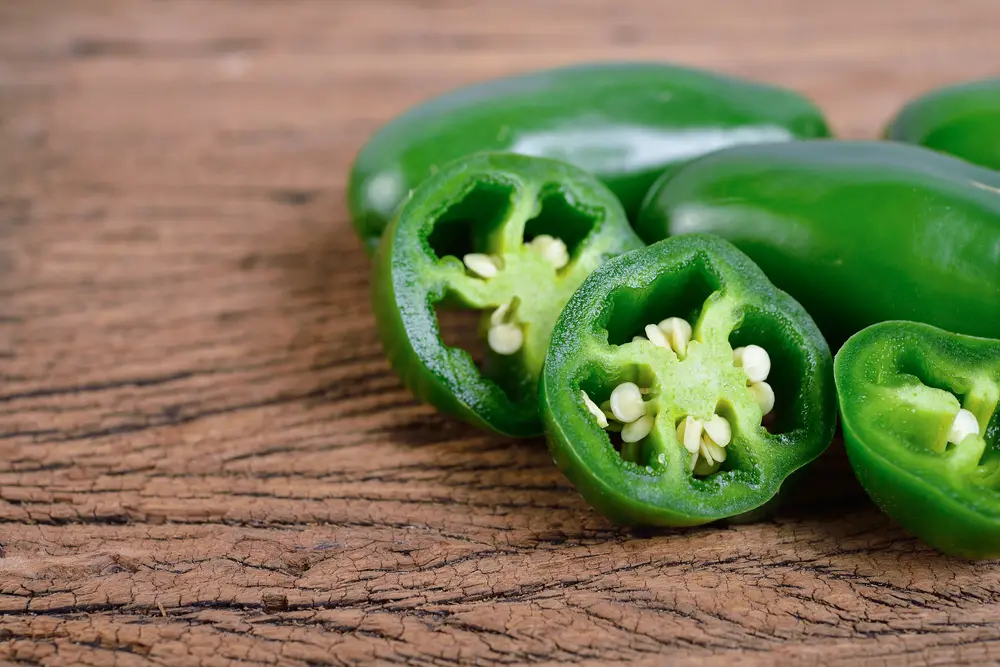You are not alone in your preference for spicy food. People have been using jalapeños (pronounced ha-la-PEEN-yos) to spice their meals for around 6,000 years.
They are originally from Mexico, where they are a mainstay of the cuisine, but today they can also be found growing in California and across the American Southwest.

Jalapeños and other peppers are rich in vitamins C and A, containing capsaicin to relieve pain. They have cancer fighting potential and help with weight loss. Capsaicin is said to increase life expectancy and keep blood sugar levels in check. It could lower the inflammation of the digestive system and help with stomach ulcers. It also fights off infections in your body whilst looking after your heart.
Benefits of Jalapeños and Other Peppers
1. Rich in Vitamin C
Jalapeños, like many other plants, are a good source of vitamin C.
One cup of sliced peppers has 107 milligrams of vitamin C, which is more than enough to fulfill the recommended daily allowance for the day.
Most people are familiar with the term “antioxidant,” which refers to the fact that peppers are full of antioxidants.
It plays a critical role in protecting cells from damage caused by environmental pollutants, as well as reactive molecules known as free radicals.
Although not necessary for your metabolism, it also helps to maintain healthy teeth, gums, and bones. It may even have an impact on your cognitive performance.
2. Rich in Vitamin A
To include jalapeños in your meals is also a simple and delicious method to healthily boost your intake of vitamin A.
Vitamin A is essential for the proper functioning of your immune system, so ensuring that you obtain enough of this nutrient can help your body fight off viruses and other diseases more efficiently.
Also engaged in your visual system, where it is particularly vital for night vision, and in the process of cell proliferation, it is known as a growth factor.
A cup of sliced jalapeño has 970 international units of vitamin A, which is approximately one-third of the daily required intake for males and approximately 40% of the daily recommended intake for women.

3. Pain Relieving Medication
When you bite into a jalapeño, do you get a burning sensation? Some of the pepper’s health advantages can be attributed to this compound.
The heat is produced by a molecule known as capsaicin, which has been linked to the development of natural pain-relieving characteristics.
Some preliminary research suggests that capsaicin may also have the additional effect of making food more filling. As a result, including low-calorie hot items like jalapeños in your meals may make it simpler to achieve your weight reduction objectives.
However, more study is needed to determine how effective it is. Some preliminary study suggests that capsaicin may have cancer-fighting potential, however, the efficacy of this has yet to be determined.
4. Increased Life Expectancy
According to one study, those who consumed spicy peppers several times a week were 13 percent less likely to die over the course of a 19-year study than those who consumed little or no peppers.
Capsaicin’s effect in increasing blood flow and reducing obesity, according to researchers, may have had a role.
5. Weight Loss and Blood Sugar Control
You may have heard that eating spicy cuisine will help you lose weight.
While peppers are not a miracle weight-loss food, studies have shown that eating them daily can help you lose weight by increasing your metabolism, burning fat, and suppressing your hunger.
Preparing a high-carb dish with chili peppers before eating it may also assist to reduce blood sugar increases.
6. Preventing Ulcers in the Stomach
While it is often assumed that spicy foods such as jalapeños can induce or worsen stomach ulcers, research has demonstrated that this is not the case.
The capsaicin found in chili peppers may help to prevent stomach ulcers from forming in the first place.
It may have this effect by lowering stomach inflammation in persons who have H. pylori and even by aiding in the elimination of the infection. However, it is not known if the quantity of capsaicin present in jalapeños is sufficient to have this effect in humans.
Chili peppers can also assist to lessen stomach damage caused by the abuse of nonsteroidal anti-inflammatory drugs (NSAIDs) and alcohol, potentially avoiding the development of ulcers from occurring in the first place.
7. Aid in the Fight Against Infections
Spices and herbs have long been used in cooking to assist prevent food spoilage and food illness, and this practice continues today.
Chipotle peppers have compounds that are particularly effective at inhibiting the development of common foodborne bacteria and yeasts.
Chili extracts have even been shown to inhibit the production of toxins by cholera bacteria, potentially decreasing the severity of this fatal foodborne disease.
Further, the current study reveals that capsaicin may be effective in preventing various forms of infections, including those caused by strep throat, tooth decay caused by bacteria, and chlamydia – an STD.
It is crucial to emphasize, however, that all of these investigations employed chili extracts rather than entire chilis, and that they were done in test tubes rather than on humans.
Based on these first findings, chili peppers may possess significant antibacterial qualities, and further investigation is being conducted to discover whether they may be employed as natural preservatives or medications.
8. Maintain Your Heart’s Health
Diabetes, high cholesterol, and high blood pressure are some of the most significant risk factors for heart disease, among others.
Capsaicin can assist to lessen the influence of these variables on your health and may even help to maintain a healthy heart.
Eaten in little amounts before a high-carb meal, it has been demonstrated that chili peppers can and do aid in the stabilization of blood sugar levels and the prevention of the big increases that occur following meals.
Cayenne pepper has been demonstrated to decrease cholesterol and lipid levels in animals, but no human trials have been undertaken so far.
Capsaicin has also been shown in animal experiments to help reduce blood pressure by relaxing blood vessels, but there has been no research to demonstrate that this is true in humans.
The preliminary evidence shows that capsaicin and chili peppers may be helpful to heart health, but further human studies are needed to confirm this.
Precautions and Possible Side Effects
There are some possible adverse effects of consuming jalapeños, even though it is related to several prospective health advantages. Immediately after eating, the most typical adverse effect is a transient burning feeling in the mouth that goes away.
Because the spiciness of the chili varies from moderate to intense, this reaction might be minor to severe.
Jalapeños can cause responses in persons who have a poor tolerance to spicy foods, but there are a few measures that can be taken to minimize these effects.
Scarring should be avoided. Keep an eye out for jalapeños with smooth skins and no little brown lines on the skin, since scars suggest a hotter pepper.
Make use of gloves. When handling peppers. Don’t touch any peppers without first putting on a good pair of gardening gloves or rubber gloves.
It is best to use gloves to avoid transmitting the spicy components to other sensitive regions of your body, such as your eyes, nose and mouth which you can burn if you touch them after touching a Chile pepper.
Membranes should be removed. Remove the white membranes inside the jalapeños before using them in a recipe, as the membranes contain the maximum quantity of capsaicin in the entire pepper.
Drink plenty of milk not water. Taking a glass of full-fat cow’s milk will briefly alleviate the burning feeling if it becomes too intense.
They keep in the fridge for about three weeks. Just wrap them in a paper towel to protect them first.
It has been shown that capsaicin can aggravate heartburn, therefore people who suffer from acid reflux may wish to avoid eating jalapeños if they are a source of discomfort for them.
It is possible for those who suffer from irritable bowel syndrome to feel unpleasant symptoms after consuming spicy chilies, especially if they do not consume them regularly.
Abdominal discomfort, burning, cramps, and diarrhoea are all common adverse effects of this medication.
Additional problems might arise when dried peppers and spices are infected with aflatoxin, which is a form of mold that develops on certain foods under specific conditions. Choosing irradiated spices may assist to limit your exposure to ionizing radiation.
Identity Those Smallish Peppers
When shopping, they might all look quite similar – shortish, small green or dark red pods – so you grab a handful and guess they’re all the same. They’re not!
If you style yourself as a bit of a jalapeño fundi, here’s some information that gives you the low down on the different types of jalapeño peppers.
Yes, they’re quite diverse! And will invest you with a lot of street and food cred with your friends the next time you go shopping together!
Below we list just a few of the many, but these seem to be the most popular:
First, Chipotles are smoked and dried jalapeños: a richly rounded heat, well-balanced heat.

Jalapeño peppers from mild to hot:
The Mucho Nacho – these are the longest of the jalapeño peppers and can grow up to 4 inches in length. They are also mildly spicy and very pleasant to eat.
The Sierra Fuego (pronounced foowAgo) – these peppers grow from dark green to dark red. They’re somewhat larger and a mildly spiced hot pepper that is quite popular and wonderful in cooking.
The Fresno – this lovely pepper is smaller and a little milder than the Señorita but lightly hotter than the Sierra Fuego.
The Señorita – finally, we turn up the heat with the Señorita. It’s a dark green color, but it can turn purple if you leave it on the vine. This pepper certainly brings the heat. Some like it hot and the Señorita is perfect for them. It does have a burn, but it won’t make you ill.
Most jalapeños are deep green and grow to be around 2 to 3 inches in length. After they have ripened, some varieties turn red, purple, or other vibrant hues.
You may purchase them fresh and whole in the vegetable department of your local store, or canned, sliced, or pickled in the aisles of the supermarket.
Whatever way you look at it, these little firecrackers are exploding with health-promoting properties.
Final Thoughts on The Health Benefits of Jalapeños and Other Peppers
Maybe all of us have tried some heat in our food at some time or another. The peppers are used to make your food more delicious according to your mood at that time.
We’ve all seen ‘the bullies’ trying to make some people eat extremely hot food that they would rather not.
The thing is that those people who were forced may never eat peppers again and miss out on all the truly delicious flavors just because they were tormented.
Different people have different heat tolerances, yet we can all enjoy peppers in our way. It shouldn’t be a competition.
Far better for it to be a celebration of nature’s bountiful gifts to different palates while, at the same time, blessing us with health benefits from the humble jalapeño.
Jenny Marie
Tribal Writer
Edited By
Patricia Godwin

